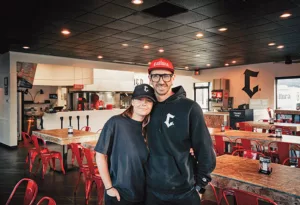
Home » Sacred Heart staff buddies up to be more efficient
Sacred Heart staff buddies up to be more efficient
Consultant helps hospital speed up patient flow, address peak busy periods
February 26, 1997
After spending the past several years expanding and remodeling its sprawling South Hill campus, Sacred Heart Medical Center is undergoing another kind of revamp: the reworking of its patient-flow strategies and day-to-day staffing needs.
While the hospital hasnt fully completed what it calls a transformation of its health-care processes, it has begun to see significant results, says Michael Wilson, Sacred Hearts president and chief operating officer.
The problems that we had previously are no longer there, he says.
In January 2004, Sacred Heart hired Empath Consulting Inc., of Hayward, Calif., to help the big Spokane hospital operate more efficiently. Based on Empaths recommendations, Sacred Heart has put in place changes in its emergency department and its inpatient wards, and now is working on improving work flow in its operating rooms. All changes are expected to be in place by August, says Elaine Couture, a vice president at Sacred Heart.
The biggest changesand most significant progressthus far have been in the emergency department, where patient wait times have dropped dramatically, and patient satisfaction has risen.
In mid-August of last year, it took a patient an average of 82 minutes to see a physician upon entering the emergency department. As of the second week of January, that average wait time had plummeted to 26 minutes.
Also, fewer people now are leaving the department without receiving treatment, Wilson says. When wait times were upward of 1 1/2 hours, 7 percent of patients who entered the department would leave without treatment. Now, he says, that walk-away rate is less than 1 percent.
On average, 133 people come to Sacred Hearts emergency department each day, Wilson says. About 10 patients a day had been leaving without treatment, and now that number has fallen to about six a week, Wilson says.
Dr. Michael Hill, president and CEO of Empath Consulting, says Sacred Heart is rapidly approaching what the consulting company refers to as best-in-class performance, which means its operating at efficiencies comparable to those of the top 10 percent of medical facilities nationwide.
Sacred Hearts problems in terms of work flow and inefficient operations are common among large hospitals that Empath serves, Hill says.
They were functioning a little below average, but they had a wonderful upside opportunity given their organizations vision and commitment, he says.
So what did Sacred Heart do differently?
Couture says the hospital realized early in the process that it no longer could operate in silos, with different parts of the hospital not knowing what was going on elsewhere.
For example, nurses in the emergency room might be overwhelmed with work at a time when nurses in the intensive-care unit had very little to do, and previously, there wasnt a way to shift staff members quickly from one part of the hospital to another.
A buddy system is in place now, so that nurses can shift from one department to another when work volumes increase and ebb in various wards in the hospital. Using software that runs on the hospitals computer network, nurses in each department rate hourly their workload with a green, yellow, or red symbol, and all others can view the status of their peers. Green means that a department has help available to lend, while yellow means its nearing a staffing shortage. Red means additional staff is needed.
Wilson says that if one department in a green condition sees that its buddy department is in red, the green department is to send available staff without being asked to do so.
Couture says departments with similar environments are paired up, such as intensive care and emergency, which both can be fast paced and high stress.
The new processes address more than staffing needs. A similar, color-coded system has been set up to signal availability of inpatient hospital beds, of which Sacred Heart has a total of about 600. A red symbol means that all beds are full in one part of the hospital, while a yellow signal suggests that a department has only a couple of beds still available. Green means plenty of beds are empty.
This system allows others to see whether a particular department has available beds without calling around.
In the emergency department, a separate new system is set up so that each step taken to care for a patient is documented, and the documentation is available on a computer program for all emergency staff to see, Wilson says. Computers with such information are set up throughout the emergency department for physicians and staff to access, Couture says. Also, she says, the system is set up to send a page to a physician when information on a patient is updated.
That way, for example, a physician can see whether X-rays or lab results are ready without having to make repeated trips to a nurses station or patient room.
The emergency department is at the center of much of the discussion of improving efficiency and largely is the reason Sacred Heart enlisted the help of Empath in improving its processes.
During 2002 and 2003, he says, Sacred Heart noticed an increase in the amount of time that its emergency room was full and was refusing to accept patients via ambulance service, Wilson says. For all of 2003, the amount of time the emergency room didnt accept patients via ambulance service equated to 31 full days.
We found ourselves being closed so often we had to find a way to fix it, Wilson says.
The improvements appear to be successful, he says. Since mid-August 2004, Sacred Heart has been closed to ambulances for a total of 42 minutes.
He credits much of the success of the revamp efforts to Sacred Heart employees, some of whom participated in focus groups that met weekly with consultants to recommend changes.
Wilson declines to disclose the cost of improvements. The return on that investment is being realized already though, he says.
Were able to move more people through with greater productivity, he says. When the through-put improves, so does the finances.
Latest News
Related Articles




_web.webp?t=1764835652)